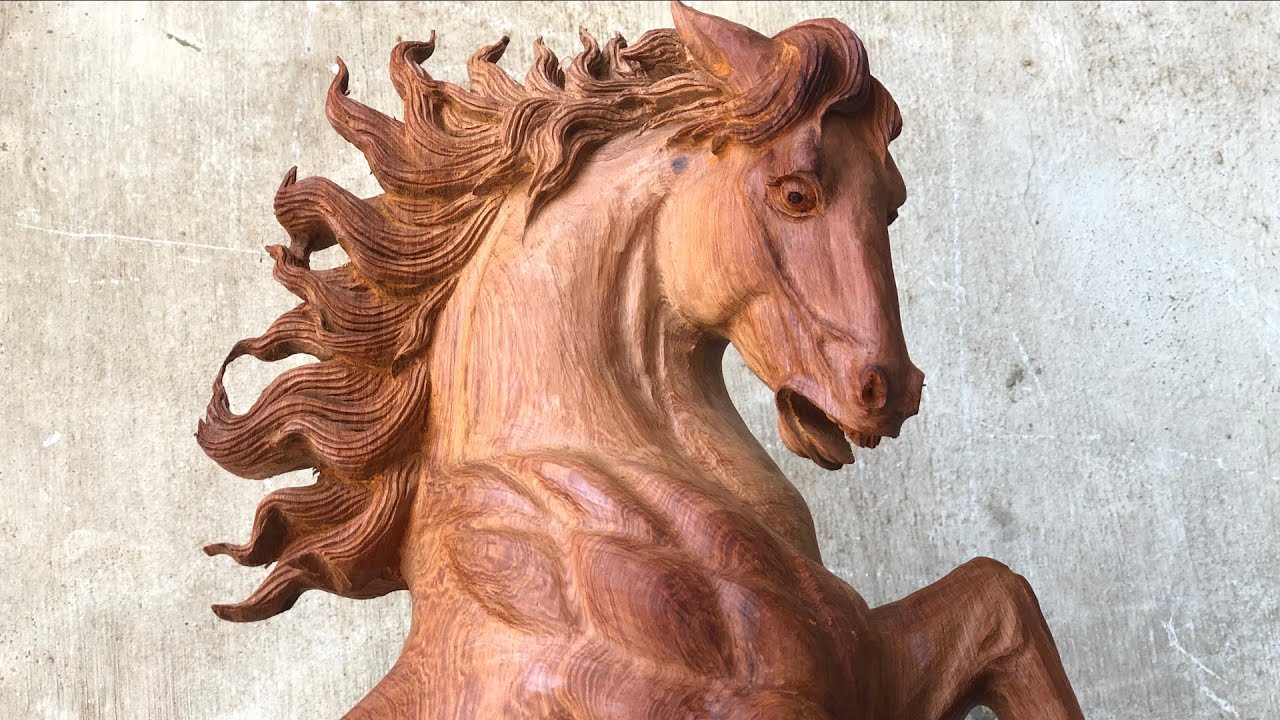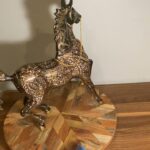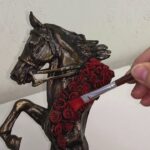
If you’re looking for a beautiful, decorative way to enhance any indoor space, wooden horse statues are the perfect solution. They have many uses, from home decorations to office displays. The beauty of horse statues cannot be denied, as they represent the symbolism of success. From a riding academy to a racetrack, they’re perfect for home or office use. You can also display these sculptures in storefront displays, restaurant and hotel decorations.
Made Karsa
You’ll have many options when shopping for a Made Karsa wooden horse sculpture. The artist creates the sculpture using suar wood, which combines elegance and strength. The sculptural details add dynamic dynamism to the statuette. Though the statuette may not have the exact coloring as pictured, you can rest assured that it is of high quality. And you won’t have to spend a fortune in order to get it.
You’ll want a beautiful and timeless centerpiece to accent your living room or family room. The brown teak wood horse sculpture is a wonderful centerpiece for your home. This sculptural piece is made from reclaimed wood, and the sculpture is easy to place in your living room. Black rubber stoppers are on the bottom of the horse’s base, so it won’t slide around. And it’s designed to look sturdy and stylish, even if it’s not used much.
English painted wooden horse sculpture from the 19th century
This beautifully weathered painted wooden horse sculpture from the nineteenth century is sure to make a wonderful decorative accent for any room. The horse’s white and red color scheme is accented with a few black and red highlights. The English painted horse is also an excellent choice for a pair. The artist Claude Vernet began painting horses during the Napoleonic period, filling a demand for painting scenes of battle. Other leading figures in the French Romantic movement included Theodore Gericault and Eugene Delacroix.
Many of the surviving works of art by these early artists are highly prized and collectible. Owners often pass them on to their children and grandchildren. Their value has skyrocketed over the years. However, there are still many collectors who seek out these pieces of art. This makes them an attractive investment for any home. However, this investment may not be for everyone. A well-made, well-preserved horse sculpture will have a substantial price tag.
The Nineteenth century saw a revival of sporting-horse art. During the previous century, George Stubbs led a movement to promote the use of depictions of horses. This movement led to the development of detailed anatomical drawings by artists. Nathaniel Currier, an American artist, made lithographs of scenes of harness racing. During the nineteenth century, horse art grew in popularity as harness racing became more popular throughout the United States.
The oldest references to painted wooden horses dating back to 1623 are associated with the Swedish artist Stika Erik Hansson. Hansson is responsible for the invention of two-colour painting using a single brush. The artist lived in Risa, Mora parish, but eventually emigrated to the United States, changing his name to Erik Erikson. This is one of the most impressive pieces of painted wooden horse art in the United States.
The French and British sculptors of the nineteenth century worked as animaliers. Isadore Bonheur, who honed his craft on the racing scene, created more original pieces than his contemporaries. Both artists were active in animal racing, but his work was far more unusual than what was popular in his day. The artists who worked as animaliers also made horse sculpture. So, when you buy a painted wooden horse sculpture from the 19th century, you can be assured of quality and value.
Mexican made Karsa
One of the most famous monuments in Mexico is the Carlos IV statue, which was once a symbol of Spanish colonial dominion and control. But these days, the statue has been transformed into a symbol of art and cultural sophistication in the country. The statue’s regal face and snout have been changed from their imperial past to become more human-like and endearing. So how can the statues be so charming and endearing?
In Mexico, Mexican artifacts are often made by carvers. The process of carving these figurines requires a great deal of skill and the right materials. The artisans use copal wood, which is native to central Mexico. They use knives and machetes to cut the copal wood into the shape of the animal. After carving, they sand the figurines smooth and add elaborate details to the statues. Once complete, these statues are dried out and oiled monthly for a year.
Monuments in Mexico City are ideological representations. The representations are bound up with changing definitions of identity and heritage. As such, understanding the context is crucial to understanding the spatial mediation of these monuments. According to Seth Dixon of the Rhode Island College in Providence, these statues are symbolic representations of diverse perspectives and cultures. This is a powerful reminder of the fact that art and architecture is a social process, and the cultural and political context of a place determines how it is used and understood.
Indian made Karsa
Whether you’re shopping for a horse statue for your home or your office, an Indian made wooden horse statue is an excellent way to add a touch of traditional charm to your space. The Indian handcrafted art of wooden horse statues is a form of home decor that is unique to India. These pieces of art are handmade and embossed. As they are handmade, they may look different from the picture you see on the internet.
Indian made wooden horse statues are truly unique and one-of-a-kind. These wooden sculptures are painted by hand and carved by skilled artisans. WelcomeIndianArt.com carries these statues, and the fine emboss painting is sure to evoke positive vibes. In addition to being beautiful, they bring good luck. And with an intricate design, an Indian made wooden horse statue will be a conversation starter with your guests.

